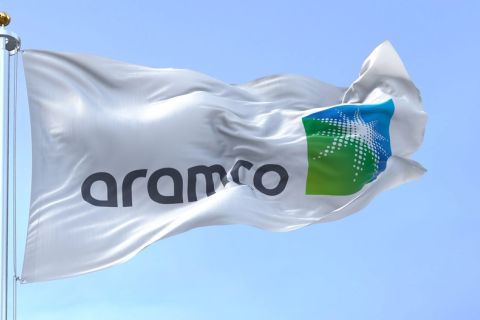
Demand for land drilling rigs is expected to increase 23% by 2017 with the greatest percentage of growth expected in Western Europe, according to a forecast released recently by Douglas-Westwood.
Although the region has a small number of rigs compared to other areas, anticipated unconventional action could spark a 63% increase in drilling rigs within the next five years. Currently, the Western European region has an estimated 115 capable drilling rigs, according to the report. Pushing the number higher is expected focus on shale reserves within the UK region.
Onshore shale gas basins in Western Europe are believed to hold 10.5 Tcm (72 Tcf) of technically recoverable resources, according to the US Energy Information Administration. About half of this amount is in France’s Paris and Southeast basins.
“With many fields in the traditional producing regions of the world reaching maturity, unconventionals will account for an increasing proportion of future hydrocarbon production,” Hannah Lewendon, the report’s author, said in a prepared statement. “Deviated and horizontal drilling is likely to increase as a result of this, driving demand for higher specification rigs that are capable of such complex techniques.”
The report showed that deviated and horizontal wells currently represent 28% of the development wells worldwide. Around 31% of total wells are predicted to be nonvertical by 2017.
Overall, “the global fleet will need to increase by approximately 1,303 capable units to meet drilling demand,” according to the report. “Strong volume growth in North American, Asian, Eastern European, and former Soviet Union (FSU) markets is expected to drive the increase, although all other regions can expect to see increases in their fleet size through 2017.”
Demand drivers include higher global production targets and the increasing complexity of well requirements as well as exploration in new regions and EOR in mature regions, the report said.
Rigs drilled onshore are forecast to increase 20% by 2017. The uptick in activity is unlike what the industry experienced in the previous five-year period, when an economic downturn resulted in a 3% drop in wells drilled. In North America the number of rigs drilled decreased 28% from 2008 to 2009, according to the report.
In the next five years, however, North America’s capacity of 3,487 capable drilling rigs is predicted to increase by 11% as operators continue developing shale resources with activity nowadays focused more on oil than gas.
“Growth in oil demand from advancing economies is expected to continue, and markets formerly inaccessible to western drilling contractors are allowing greater access,” Lewendon said. “Although the activity of international rig contractors is growing in some countries, markets with high rig counts including China, India,and Venezuela remain dominated by national oil companies’ operations.”
Asia, which has an estimated 2,065 capable drilling rigs, could see a 13% increase within five years. Australasia, where the report said most rigs are designed for drilling at shallow depths, could experience a 22% increase. The region currently has about 364 capable drilling rigs.
Latin America, which has an estimated 835 drilling rigs, could have an 11% percent increase, according to the report.
National oil companies also continue to dominate the majority of markets within the Middle East and North Africa region, but growing international contractor participation in the significant rig fleets of Iraq and Kuwait is likely to continue throughout the forecast period.
The report showed the FSU and Eastern European regions combined have an estimated 2,073 capable drilling rigs. That amount could grow by 15% by 2017.
“Despite the forecast growth, challenges remain including the political instability in the Middle East,” Lewendon said. “However, increasing difficulties here will only serve to shift drilling activities to more stable countries.”
The Middle East and North Africa regions, where “highly productive wells are invariably drilled by modern rig fleets in major markets including Saudi Arabia and Algeria,” has just more than 1,000 drilling rigs. This amountcould grow 6% by 2017.
Security also is of concern in Sub-Saharan Africa, the report noted. Despite the concerns, which also include rig mobility issues, the number of drilling rigs is predicted to jump by 38%. The region currently has 124 rigs.
Douglas-Westwood called the outlook for growth “positive,” but pointed out obstacles. Maturing fields and new hydrocarbon resources will increase the demand for rigs capable of deviated drilling, the report said. “As [EOR] and fracturing techniques become more in demand, greater investment and addressing of environmental concerns will need to take place as the industry seeks to increase output from previously inaccessible reserves.”
Contact the author, Velda Addison, at vaddison@hartenergy.com.
Recommended Reading
Shell’s CEO Sawan Says Confidence in US LNG is Slipping
2024-02-05 - Issues related to Venture Global LNG’s contract commitments and U.S. President Joe Biden’s recent decision to pause approvals of new U.S. liquefaction plants have raised questions about the reliability of the American LNG sector, according to Shell CEO Wael Sawan.
Mexico Pacific Appoints New CEO Bairstow
2024-04-15 - Sarah Bairstow joined Mexico Pacific Ltd. in 2019 and is assuming the CEO role following Ivan Van der Walt’s resignation.
BP Pursues ‘25-by-‘25’ Target to Amp Up LNG Production
2024-02-15 - BP wants to boost its LNG portfolio to 25 mtpa by 2025 under a plan dubbed “25-by-25,” upping its portfolio by 9% compared to 2023, CEO Murray Auchincloss said during the company’s webcast with analysts.
BP Restructures, Reduces Executive Team to 10
2024-04-18 - BP said the organizational changes will reduce duplication and reporting line complexity.
Aramco Reports Second Highest Net Income for 2023
2024-03-15 - The year-on-year decline was due to lower crude oil prices and volumes sold and lower refining and chemicals margins.





